More than ten years after the change of regime, many were still unable to understand or process what had happened to Hungary in the decades before. Perhaps that is why there was so unimaginable number of visitors at the opening of the House of Terror Museum on 24 February 2002, and perhaps this also explains the fact that over the past 20 years, an incredible number of seven million people have seen the exhibition about the Communist and Arrow Cross terror.
Newspapers also reported on the unprecedented interest after the opening, it is worth recalling their reports at the time.
"Almost a hundred thousand people went to the opening of the House of Terror Museum in Budapest to commemorate the victims of the Arrow Cross and the communist dictatorships," wrote the Magyar Nemzet on 25 February 2002, when it reported on the previous day's opening. "The House of Terror Museum, which commemorates the victims of the Arrow Cross and the Communist dictatorship, has gathered such a huge crowd that the underground did not stop at Vörösmarty Street," the daily wrote.
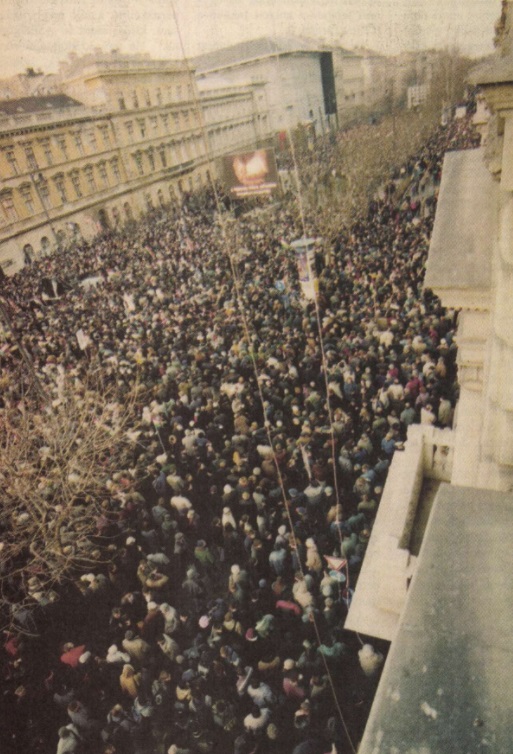
Huge crowd on the opening of the House of Terror Museum on Andrássy Avenue (Source: Magyar Demokrata, 16 May 2002)

The House of Terror Museum has been visited by more than 7 million people in the last twenty years (Source: House of Terror Museum)
On 26 February 2002, the Veszprémi Napló also reported on the unprecedented interest: “The museum at 60 Andrássy Avenue was open on the first day, as promised until every visitor was let in; the last group was admitted at 2 a.m. According to the director of the museum, 130-150 thousand people gathered for the opening on Sunday evening, from Oktogon to Kodály Körönd, Andrássy Avenue was covered by crowds.”
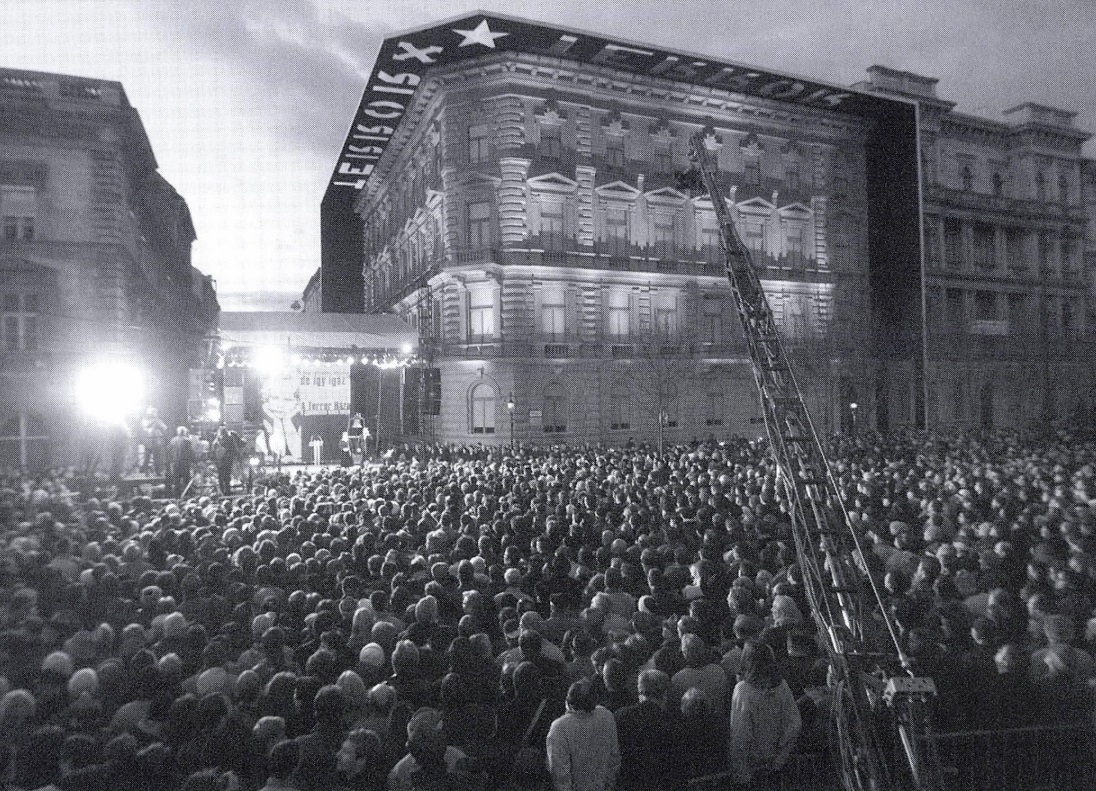
Opening of the House of Terror on 24 February 2002, the last group was admitted at two in the morning (Source: Budapesti Negyed, Winter 2005, Issue 50)
On one of the most beautiful and perhaps the most important roads in Budapest, Andrássy Avenue, the House of Terror Museum can be found, which remembers the Hungarian fascist and communist regimes and its victims, and which is celebrating its twentieth anniversary this year.
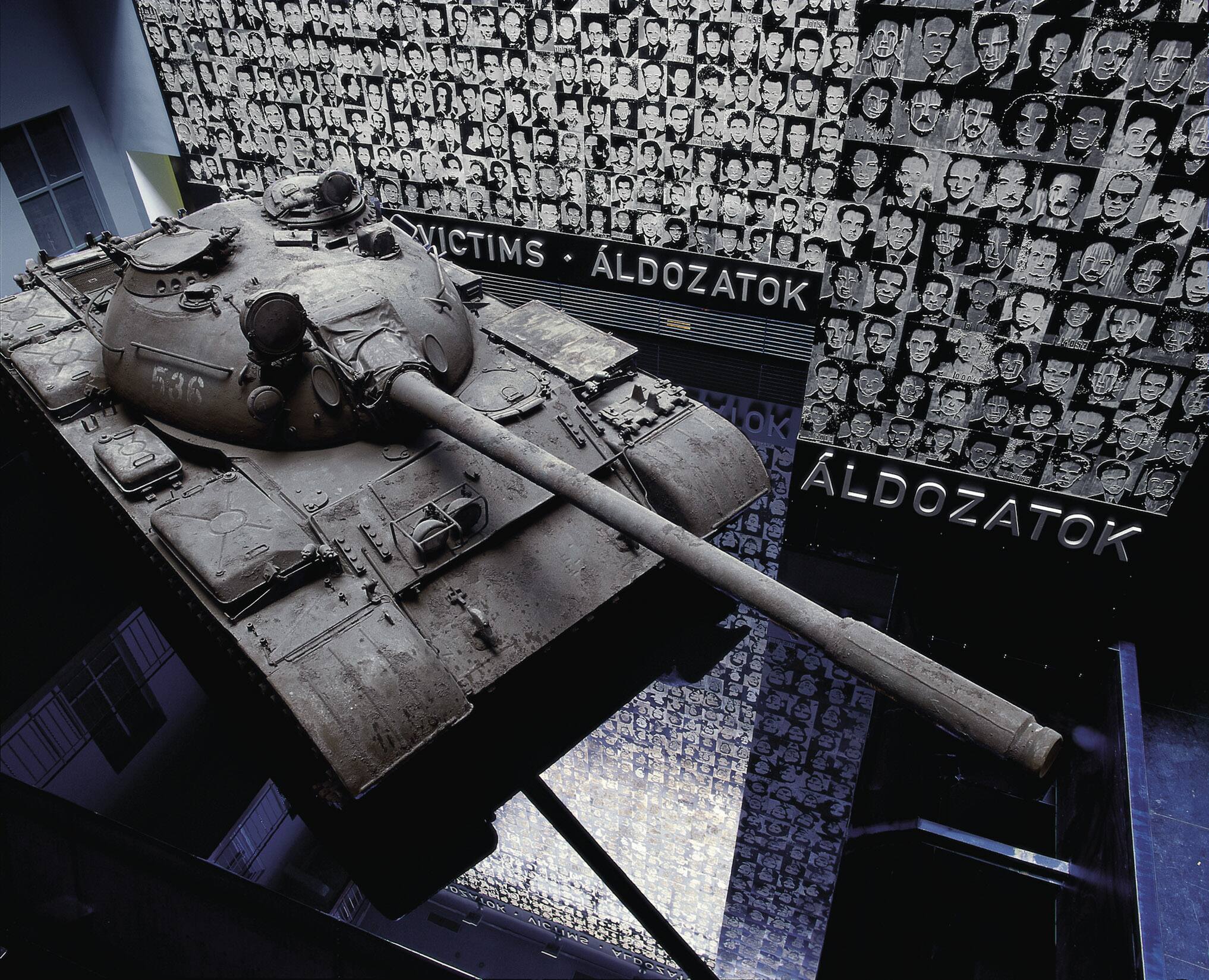
Pictures of the victims in the foreground of the exhibition and the huge tank (Source: House of Terror Museum)
The Neo-Renaissance style building at 60 Andrássy Avenue was designed by Adolf Feszty in 1882 at the request of Zsigmond Fischer and Imre Sonnenberg. The owner of the three-storey house was Jakab Perlmutter from 1885. The building was used by many tenants, including in 1889 by the National Commission on Monuments. Later, the house passed to Perlmutter's relatives, and finally to the famous painter Izsák Perlmutter, who bequeathed the house to his wife and stepdaughter, with the stipulation that after them, the Pest Jewish Community would acquire ownership and a quarter of the property must be used for the Jewish Museum.
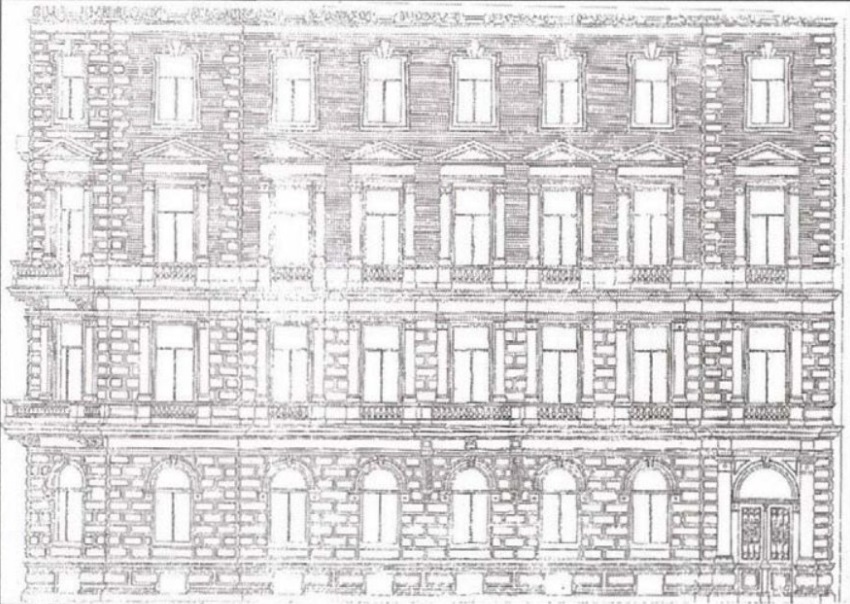
The plan of the main facade of the building on Andrássy Avenue from Adolf Feszty, 1880 (Source: Csaba Keresztessy: 60 Andrássy Avenue; In: História, 2002. Issue 5–6)
Later, in 1937, the Arrow Cross party was only one of the tenants, but in the 1940s, Szálasi and his party had their headquarters here, so the building became the “House of Loyalty”. After World War II, the Communist State Political Police (PRO) - later the Hungarian State Police State Defense Department (ÁVO) and then the State Security Authority (ÁVH) - operated within its walls.
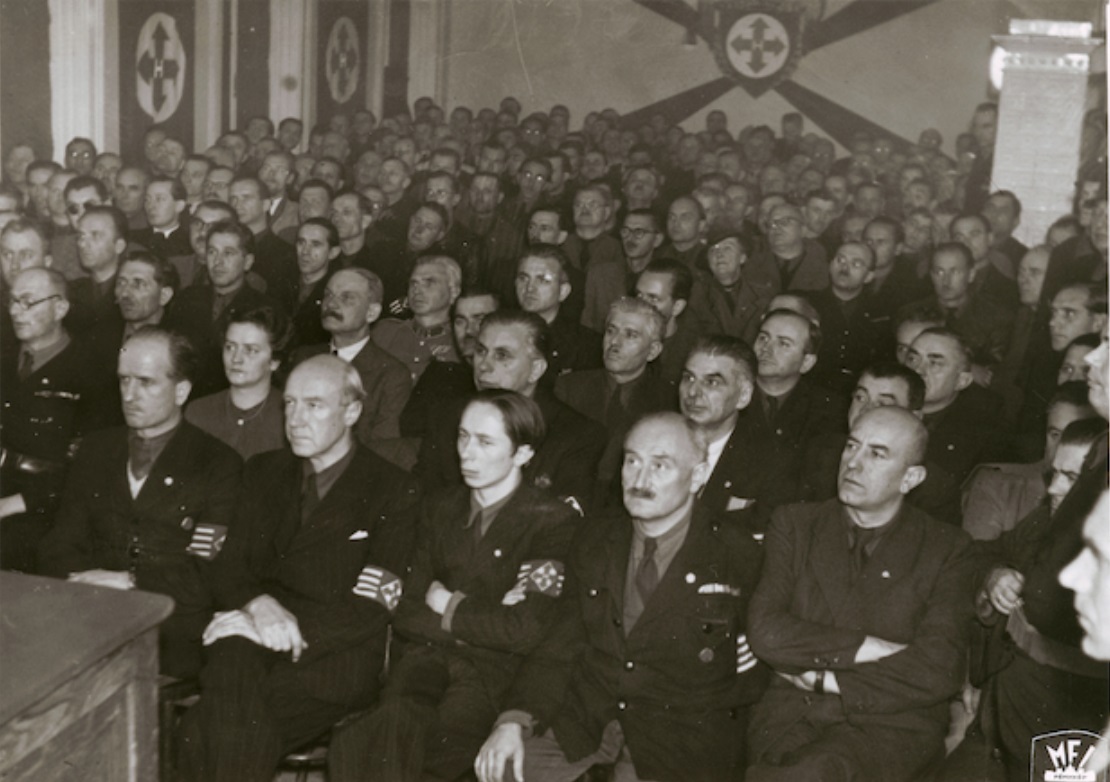
The Grand Council of Hungarists meets at the House of Loyalty in 60 Andrássy Avenue, 1944 (Source: Magyar Filmiroda Rt. - Hungarian National Museum - online database)
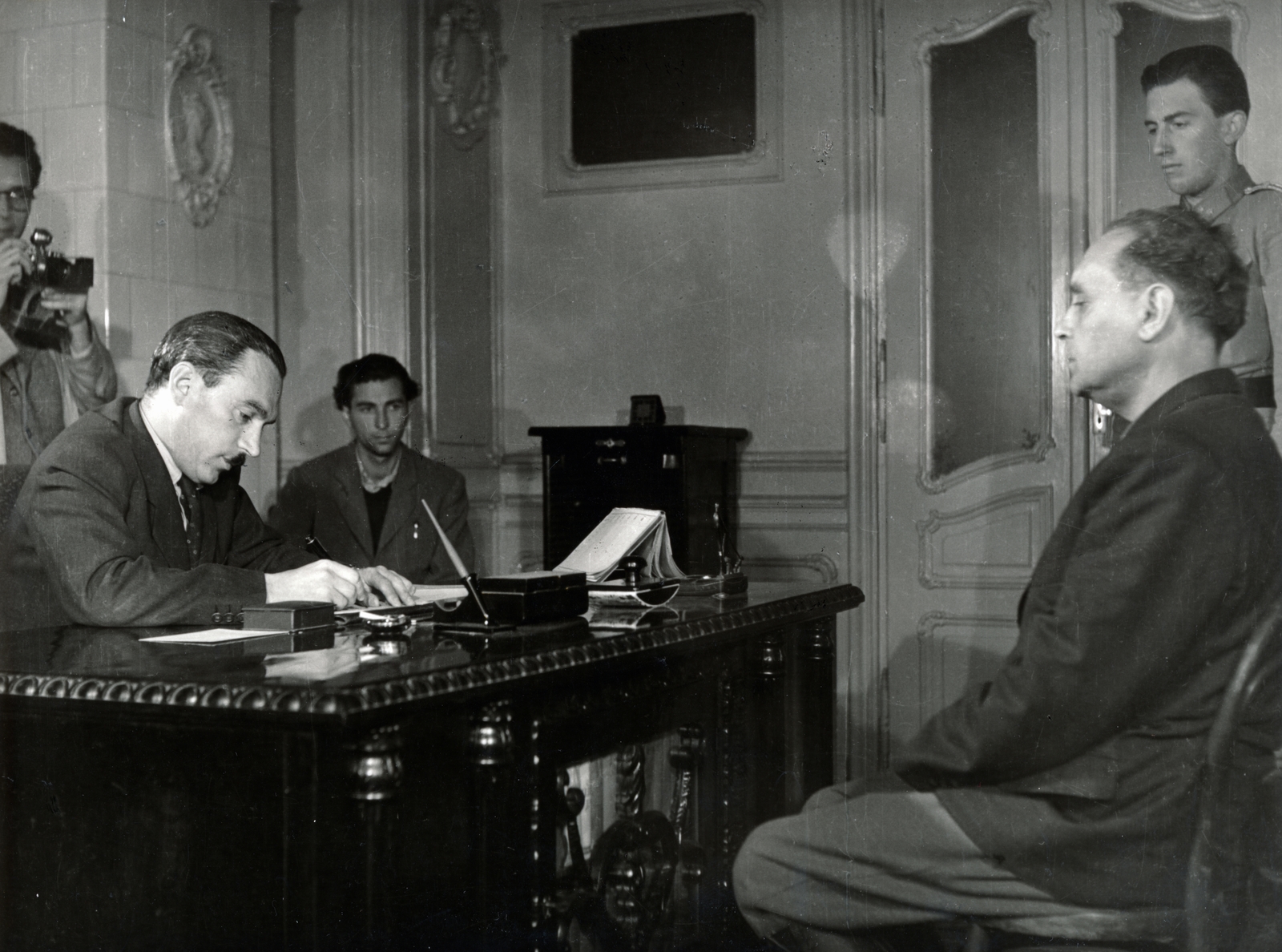
Gábor Péter, head of the State Political Police, interrogates Ferenc Szálasi, a former Arrow Cross “national leader” and prime minister in 1946 (Photo: Fortepan/No.: 155540)
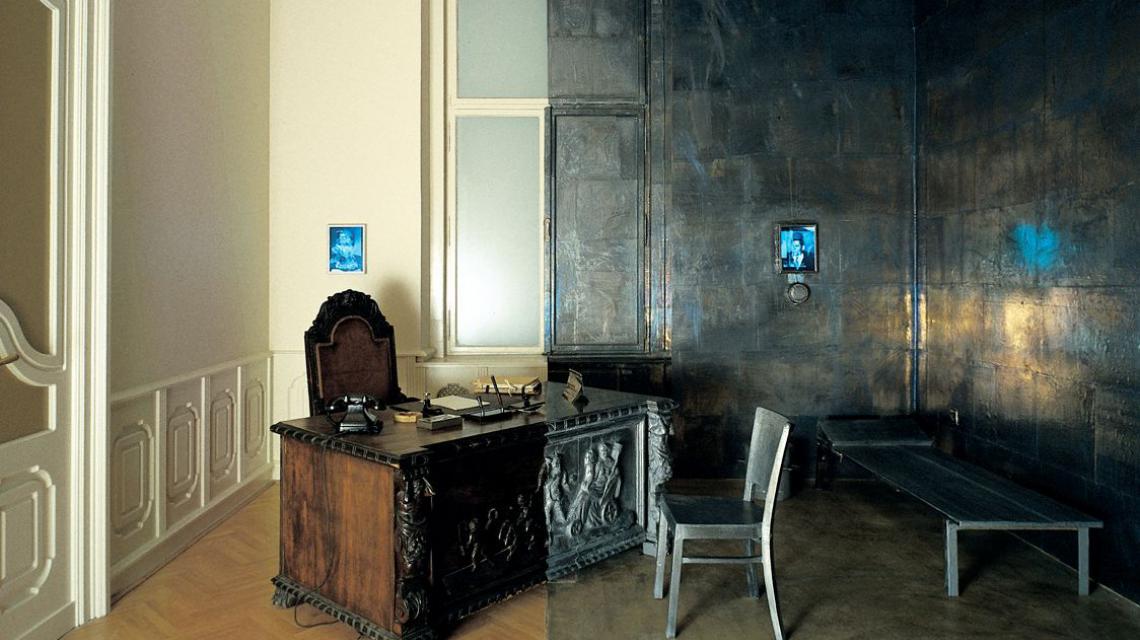
Based on photographs and reports, the study of Gábor Péter, the former leader of the ÁVH, was reconstructed. Survivors report on ÁVH interrogation methods on the screens (Source: House of Terror Museum)
A system of prisons and torture chambers was set up in the building, where many people lost their lives until 1956, after which the building was remodelled and handed over to foreign trade companies. The basement rooms were also remodelled, more of the former cellar prisons were walled out, but there were some where a KISZ (Young Communist League) club was held.
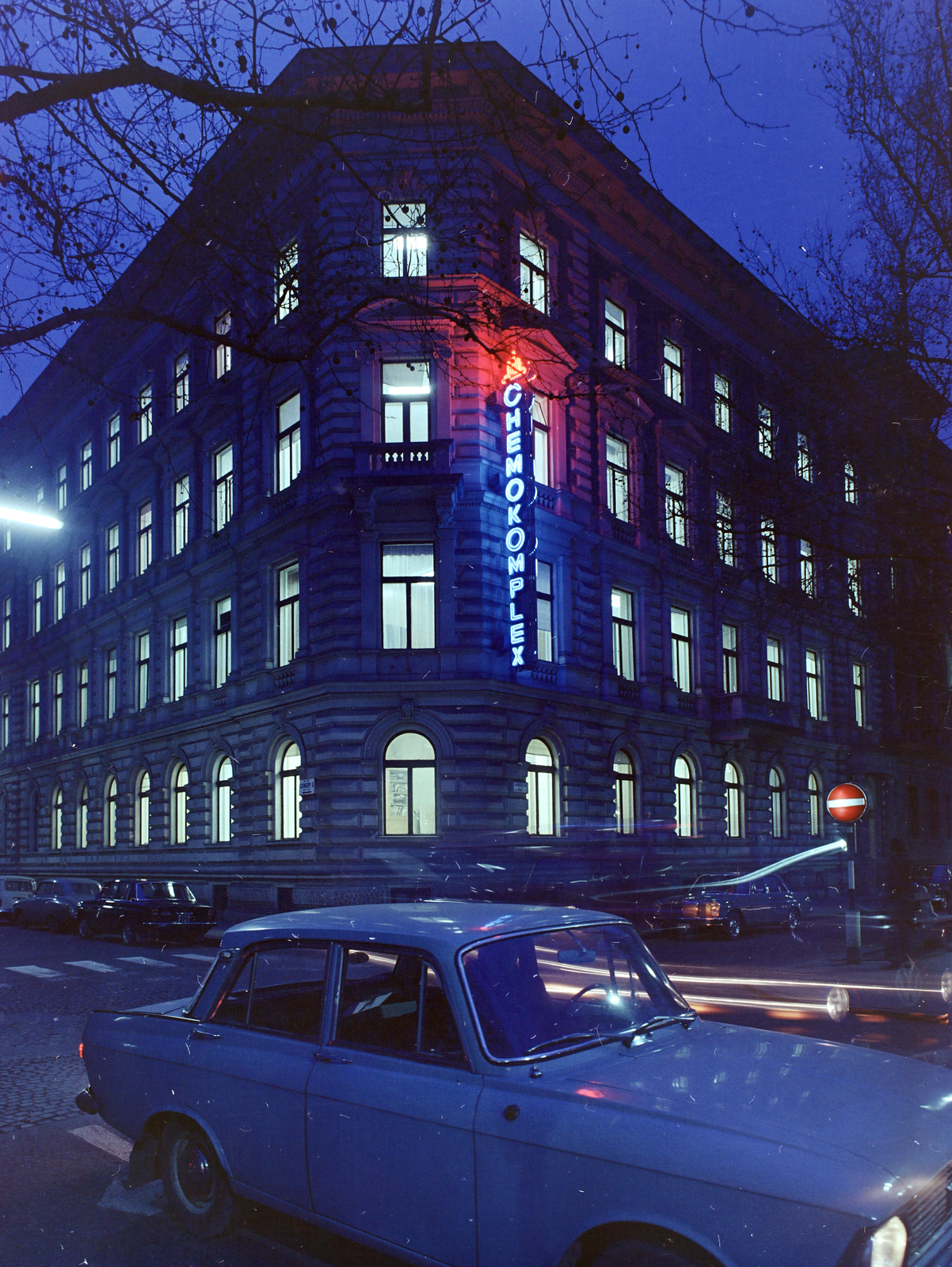
After the 1956 revolution, various companies used the building under 60 Andrássy Avenue (then Népköztársaság Road), and in 1973 it operated as - for example - the headquarters of the Chemokomplex (Photo: Fortepan/No.: 216016)
Ten years after the change of regime, in December 2000, the Public Foundation for Research on Central and Eastern European History and Society purchased the building to present two very bloody periods of Hungarian history to posterity through museum exhibitions.
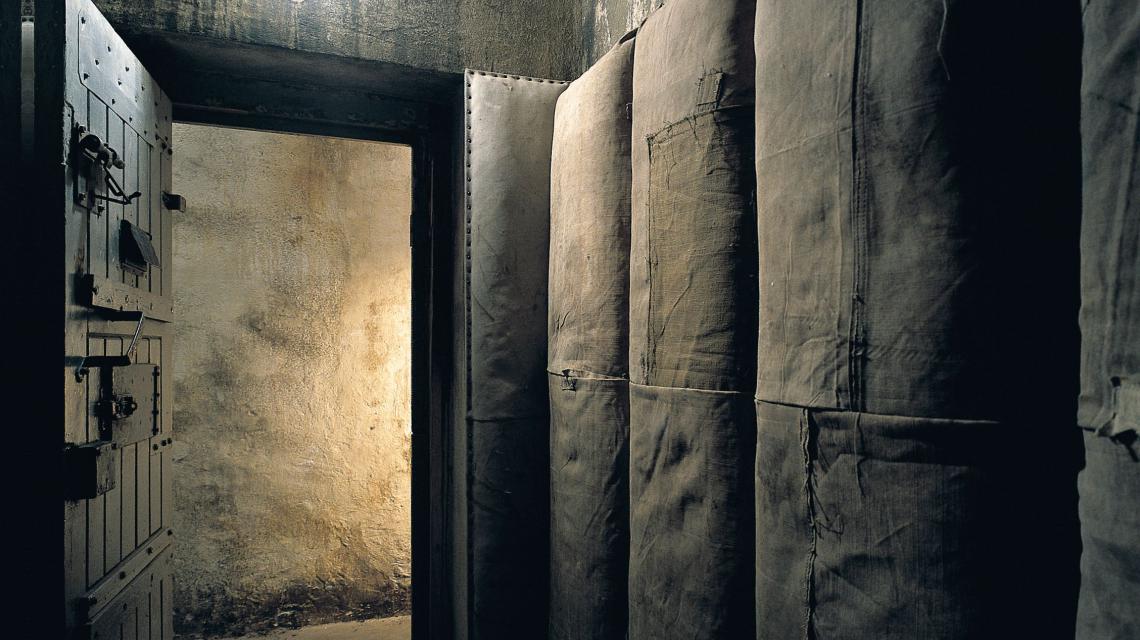
The cells in the basement reveal the shocking, fatal human reality to visitors (Source: House of Terror Museum)
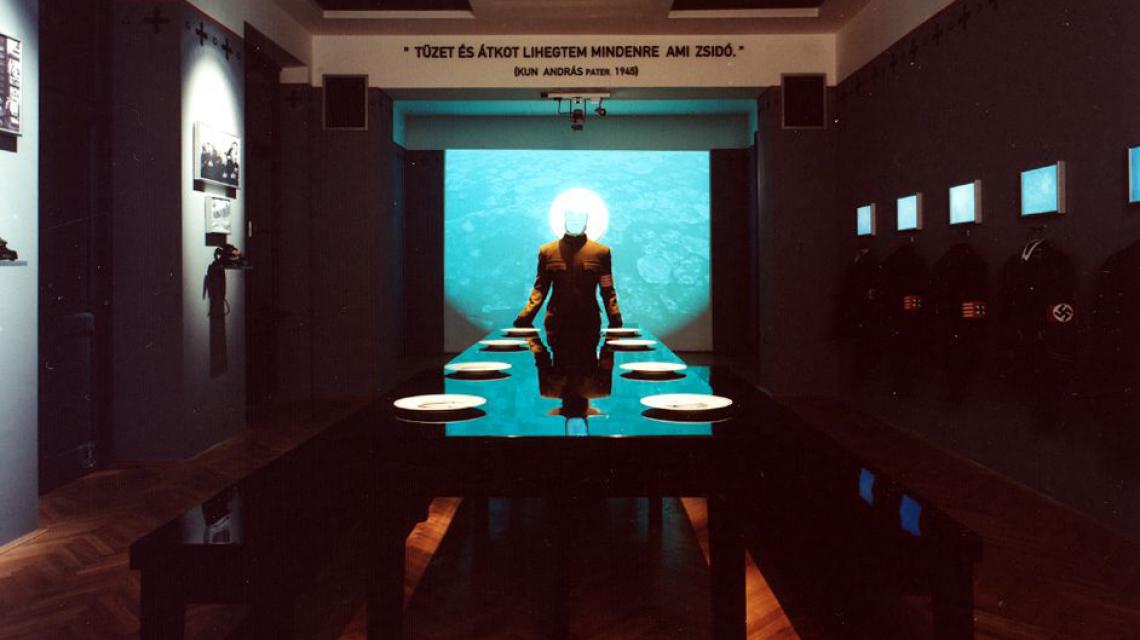
A detail from the exhibition presenting an Arrow Cross party boardroom (Source: House of Terror Museum)
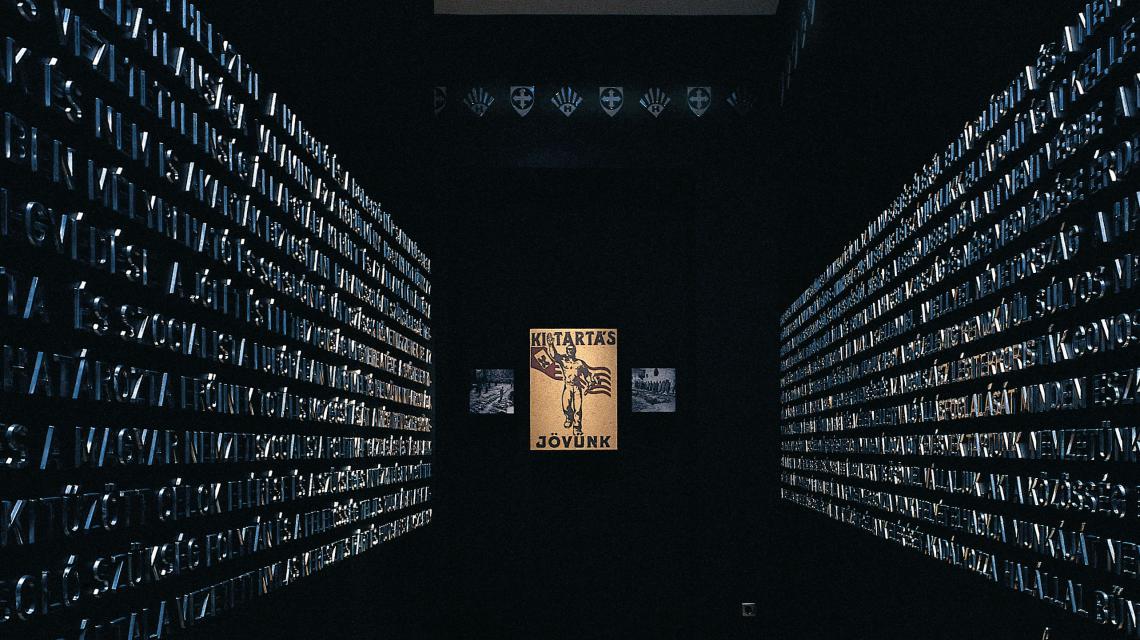
The room is called the Arrow Cross Corridor, where period documents and photographs can be seen on the walls (Source: House of Terror Museum)
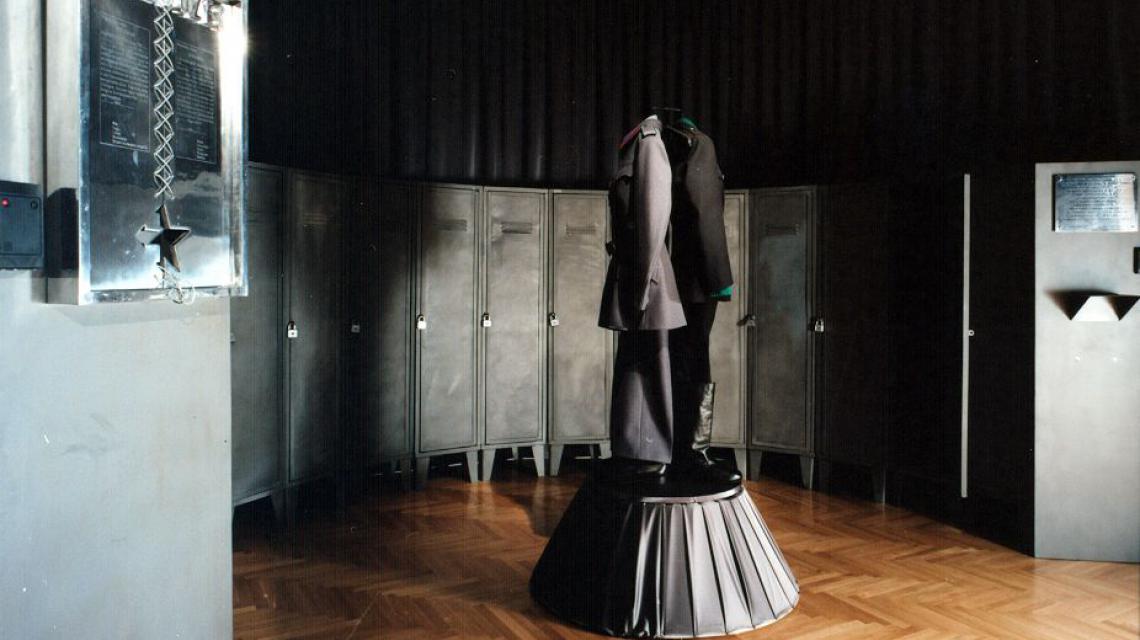
The dressing room, which expresses the fact that after 1945, when Rákosi and the Hungarian Communists trained in Moscow returned home, the number of members of the Hungarian Communist Party was minimal, so they had to admit former arrow cross members to the party (Source: House of Terror Museum)
The building of the House of Terror became a concept several times, as it was the hell of the Arrow Cross Party in 1944, where Jews were tortured, and in 1945 it was the headquarters of the Communists, who caused suffering to the prisoners (many of whom died) here until 1956.
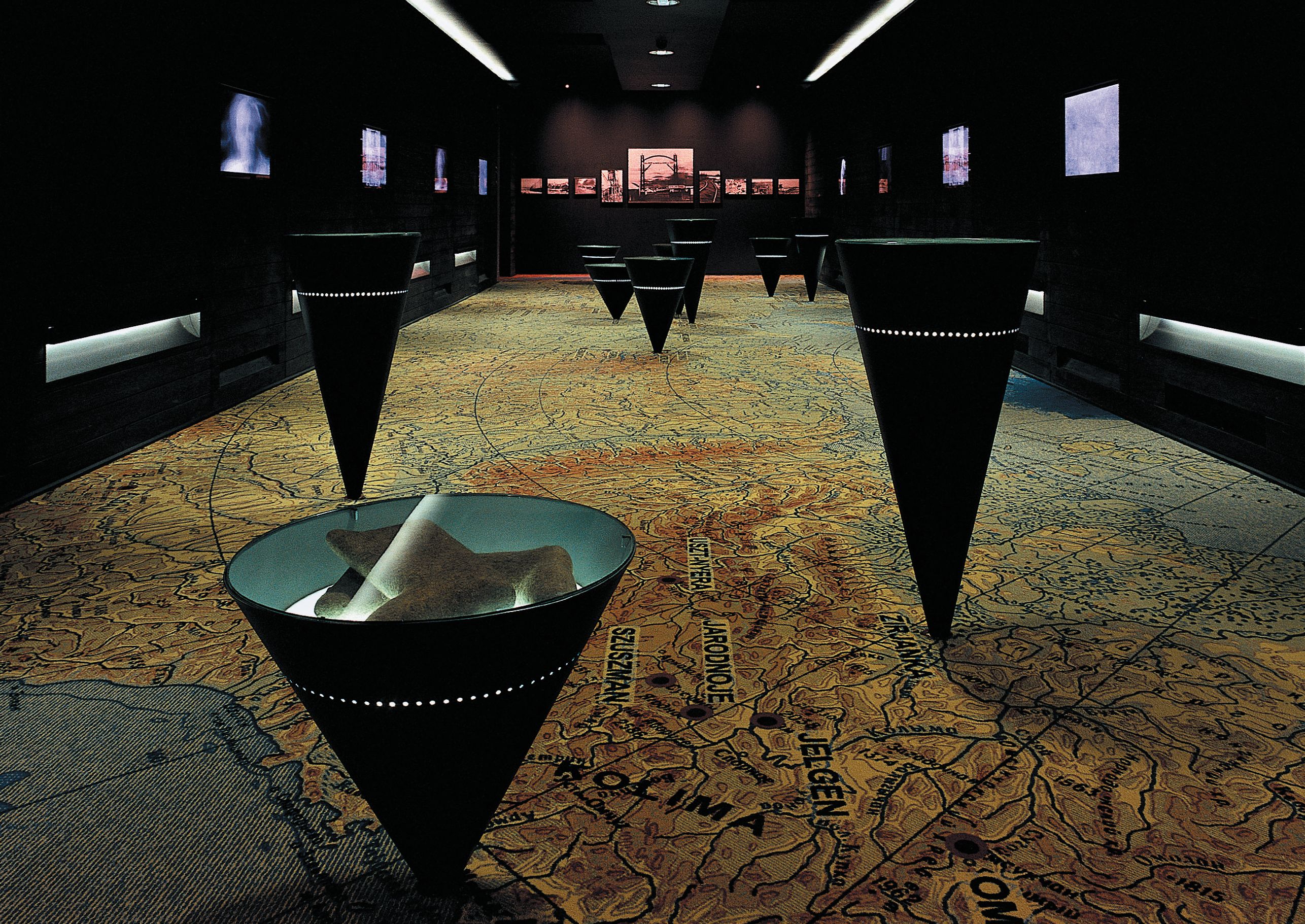
The room presents the world of Soviet forced labour and slave camps (source: House of Terror Museum)
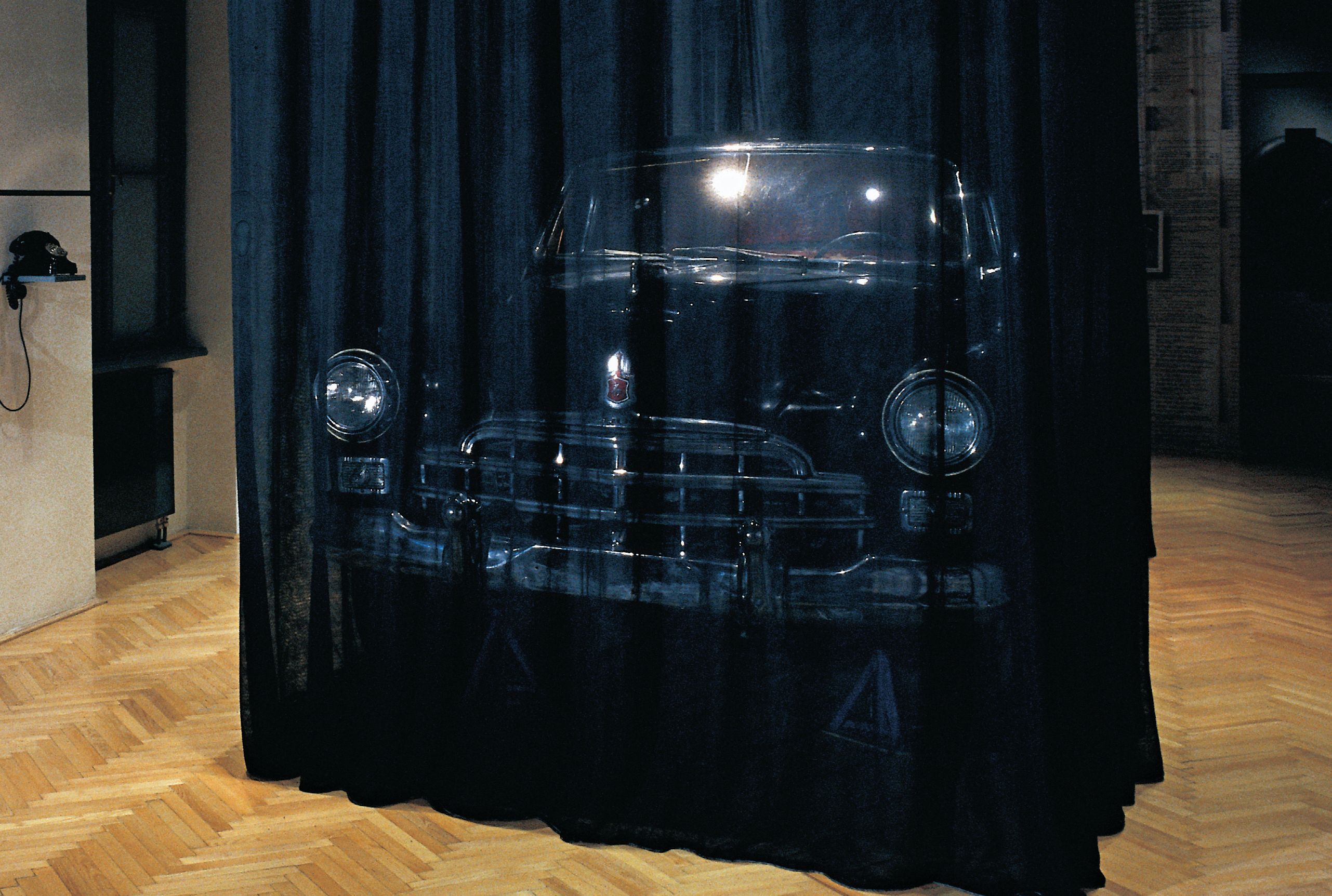
In 1951, tens of thousands of people were displaced and expelled from the country. The famous ZIM-type car on display is a terrifying memory of the age: it recalls the infamous “black car” used to take “the enemies of the system” at night (Source: House of Terror Museum).
After the first renovation, the building was remodelled both inside and out according to the theme of the exhibition, and with the black ledge surrounding the facade called the “blade wall” that defines the image of the house, the whole building was turned into a monument.
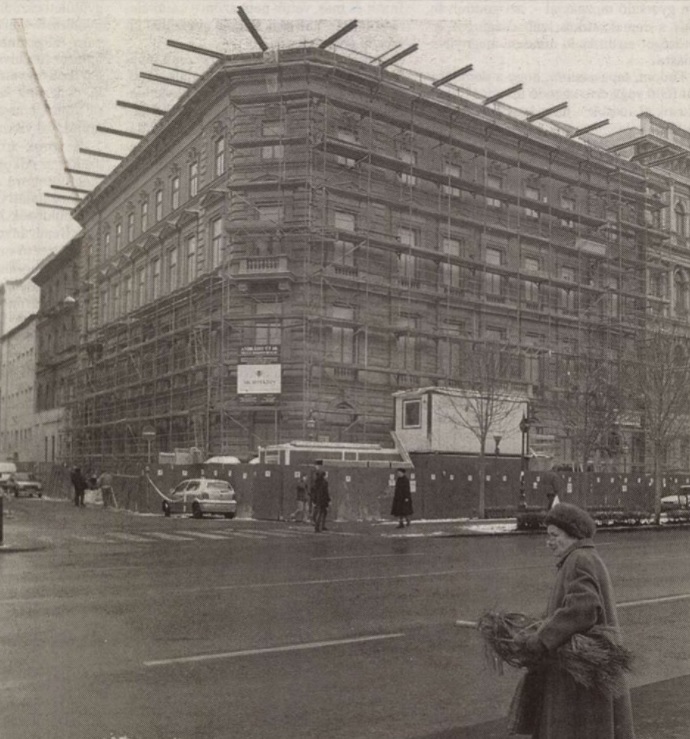
The making of the blade wall for highlighting and framing the building in 2001 (Source: Magyar Hírlap, 13 December 2001).
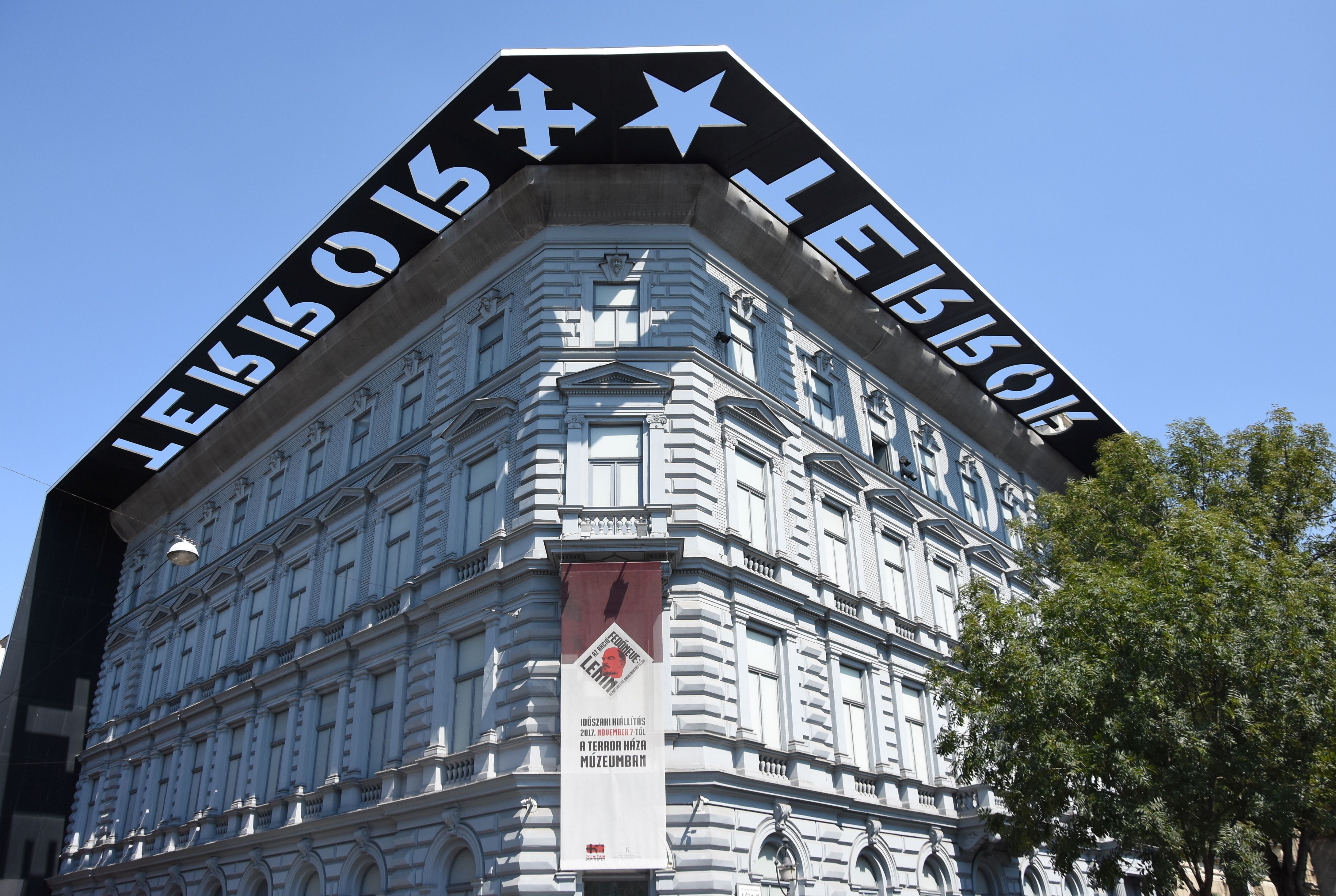
If the light reaches the building at the right angle, the cut-out of the blade wall will project the word TERROR, which refers to the history of the building, as a sobering warning on the facade (Source: House of Terror Museum)
The image of the exterior facade, the interior design plans and the exhibition is the work of architect Attila F. Kovács. The background music and sound effects of the exhibition were composed by composer Ákos Kovács. The main concept of the House of Terror Museum exhibition was created by the director-general dr Mária Schmidt.
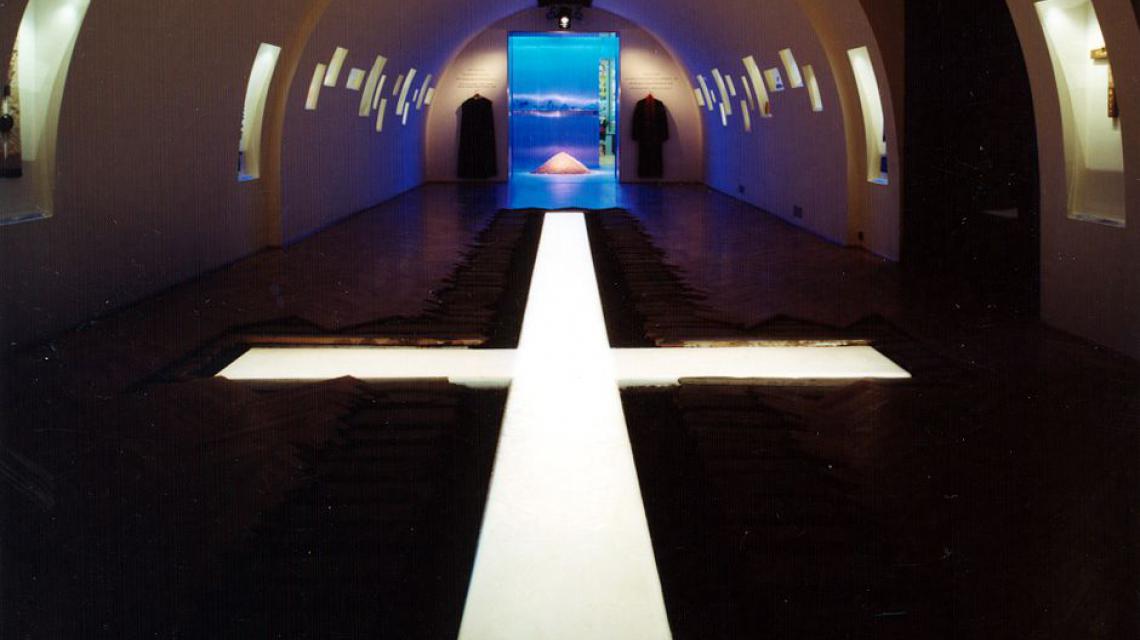
The room of churches and denominations is showing documentaries about ecclesiastical people persecuted and imprisoned (Source: House of Terror Museum)
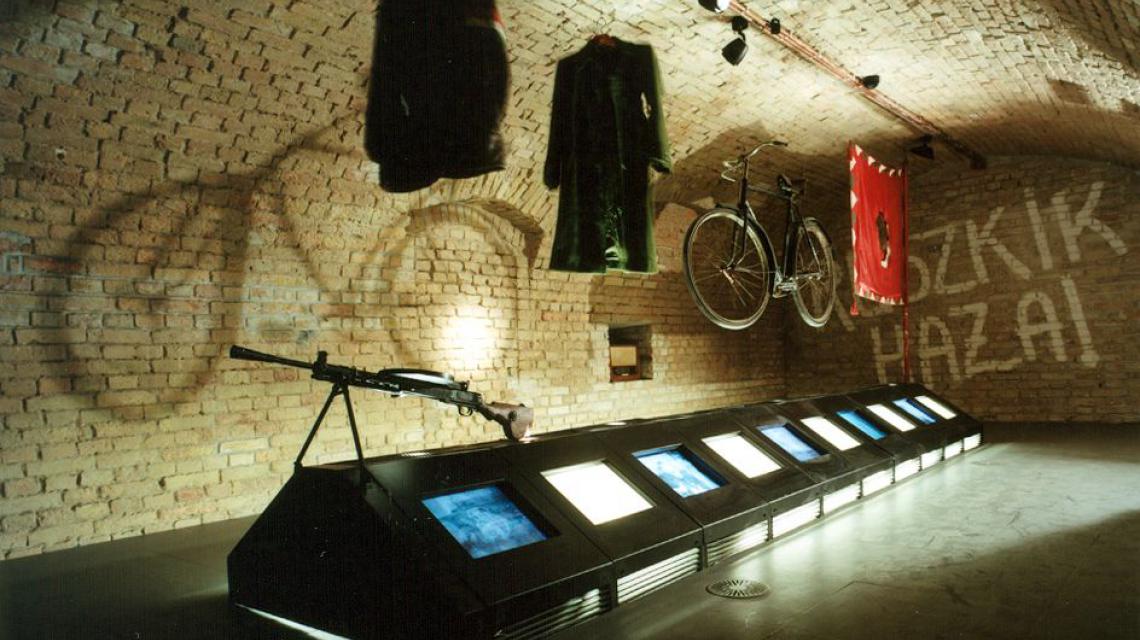
The room recalls the events of the 1956 revolution, erecting a worthy memory of the Hungarian heroes who fell in the fighting (Source: House of Terror Museum)
The House of Terror Museum has become a real concept in the last twenty years and still enjoys tremendous attention today. Not only has it attracted the interest of the domestic public (in many cases the descendants of those tortured here), but it is also regularly visited by foreign tourists, thanks to this, the institution has received more than seven million people so far.
In addition to the multi-storey permanent exhibition that has shocked and shaken most visitors, the public has also seen several large-scale temporary exhibitions in recent years. Even on the 20th anniversary of its existence, the House of Terror Museum offers some special programs, and on its website, everyone can watch interesting videos and read articles about the era of Hungary, about which people still cannot talk calmly without disturbing emotions.
Cover photo: The House of Terror Museum in the 6th District at 60 Andrássy Avenue

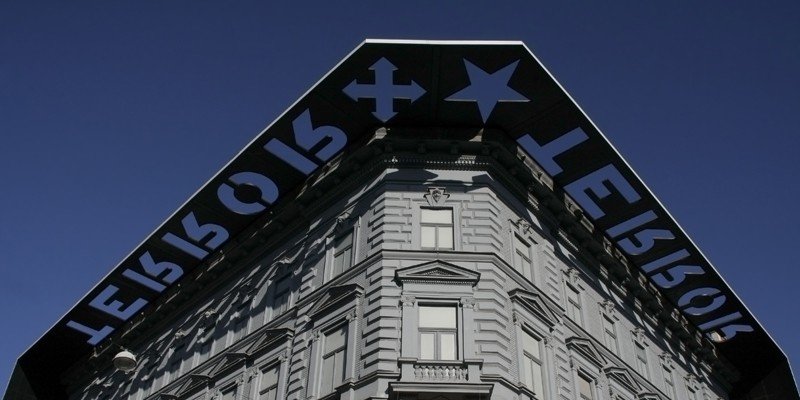


































Hozzászólások
Log in or register to comment!
Login Registration